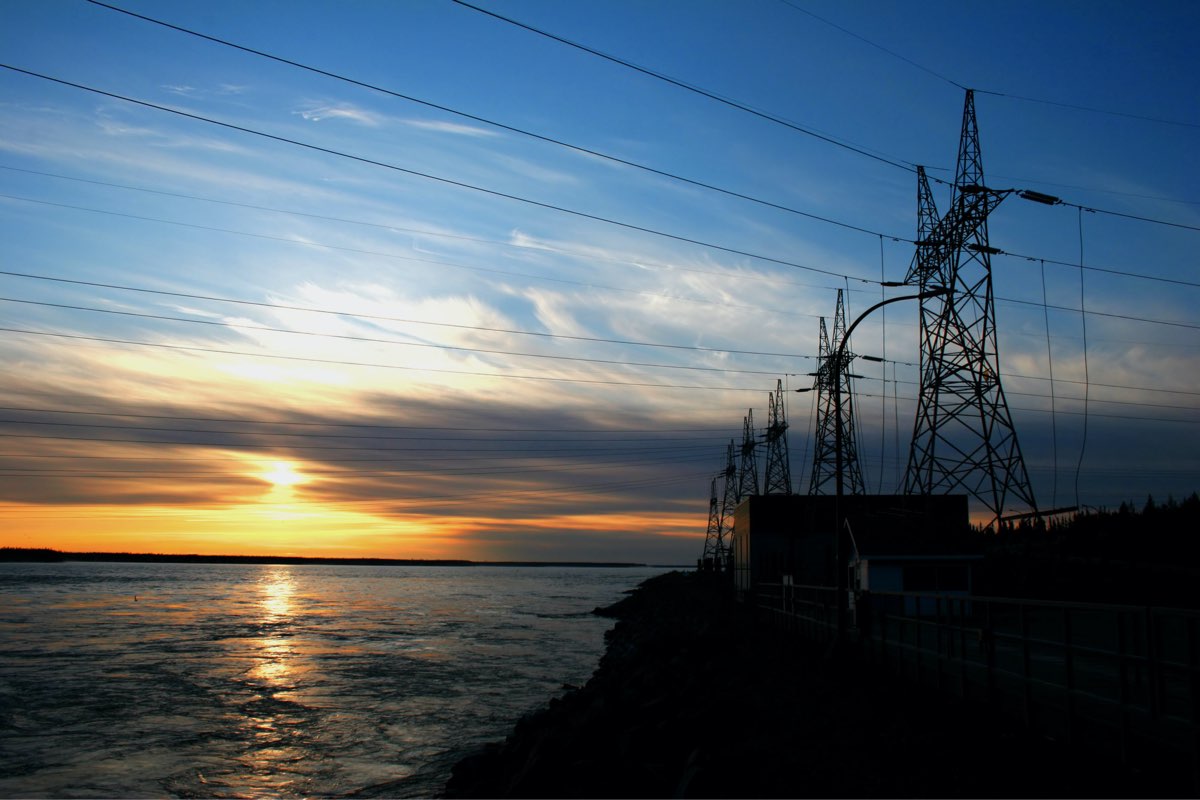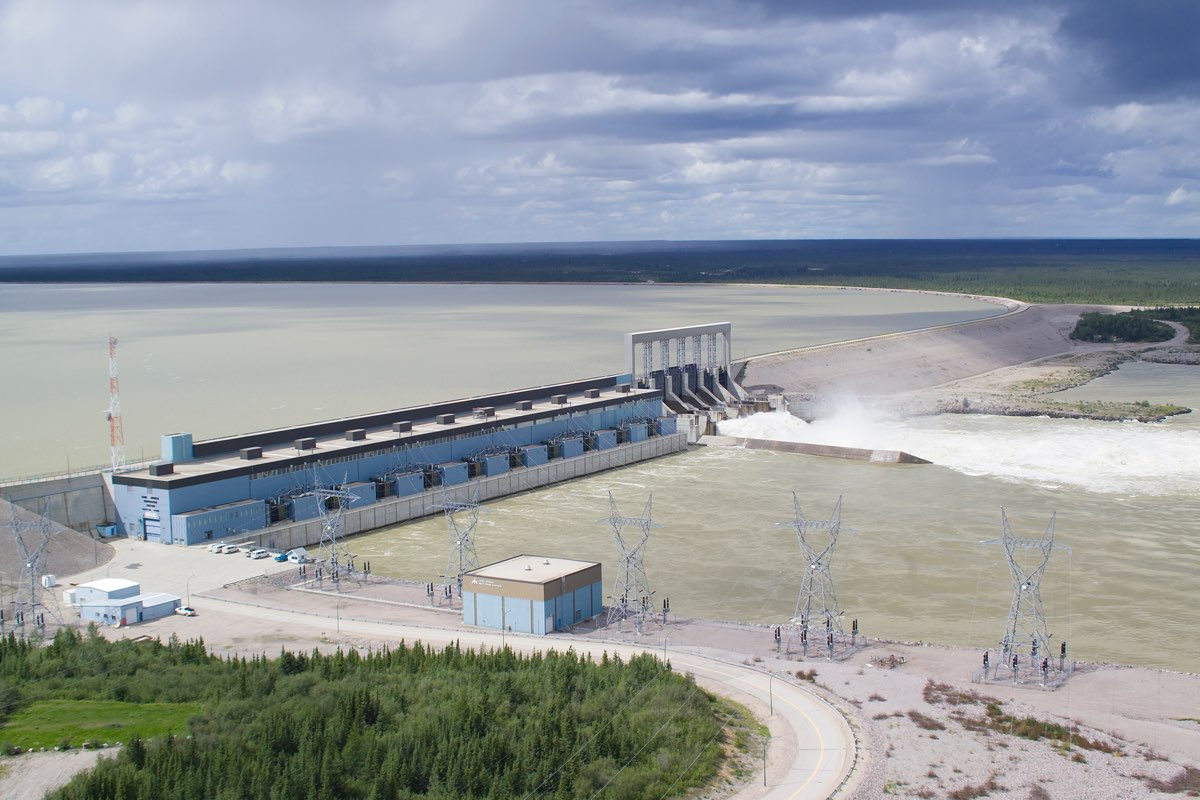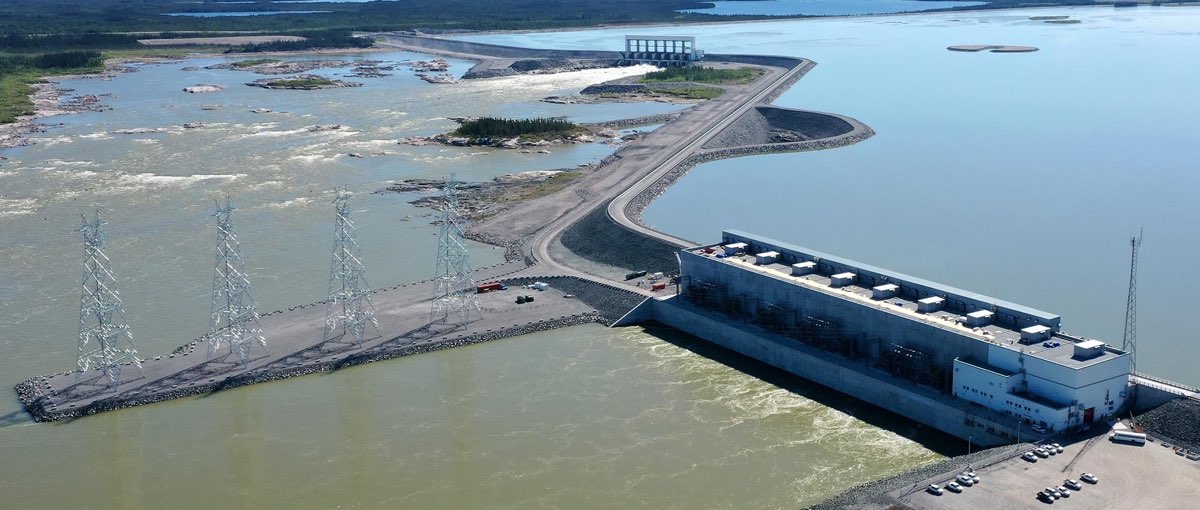Long Spruce Generating Station: a pivotal part of Manitoba Hydro’s environmentally responsible electricity system
As one of the largest generating stations in Manitoba Hydro’s fleet, Long Spruce plays an important role in the utility’s day-to-day function, generating renewable, reliable power for customers at home and abroad.
Long Spruce: origins
Work to build the Long Spruce Generating Station began in 1971.
“Long Spruce is a huge part of Manitoba Hydro’s system,” says Tom Playford, Manitoba Hydro Department Manager for Northern Generation.
By the time construction was completed in 1979, over 460,000 cubic metres or over 16,054,365 cubic feet of concrete had been used on the project.
“That’s enough concrete to build a two-lane highway almost 125 miles or 200 kilometres long,” Playford said.
Long Spruce Generating Station is over 745 kilometres (460 miles) northeast of Winnipeg on the Nelson River. This puts its footprint solidly in the frigid Manitoba north and in the traditional territory of Fox Lake Cree Nation, one of many First Nations Manitoba Hydro has relationships with.
“Long Spruce is in a geographical area and on land to which Fox Lake Cree Nation members maintain a strong connection to this day,” said Monica Wiest, Manitoba Hydro Community Relations Advisor. “Because of this, Manitoba Hydro continues to work collaboratively with Fox Lake Cree Nation on issues of mutual interest and benefit.”

Long Spruce Generating Station’s outgoing transmission lines bringing clean, renewable power to our customers’ fingertips.
Harnessing the Nelson River
Long Spruce Generating Station has 10 generators that take advantage of a 26-metre (85-foot) drop in water levels to generate approximately 980 MW of hydropower – enough to power up to 640,000 average sized homes for a year.
Like many of Manitoba Hydro’s generating stations, Long Spruce is essentially a run-of-river plant.
“This means that water arriving at the station is used almost immediately and there’s no large reservoir attached to the station,” Playford said.
However, over eight miles of diking is still required to contain the forebay, giving Long Spruce a unique look among Nelson River plants.

Long Spruce Generating Station
“There is a road incorporated into the station’s main dam, spillway and powerhouse which allows traffic to access the town of Gillam, MB across the Nelson River,” Playford said.
The generator hall measures approximately 330 yards or 300 metres long, but despite its massive size, only 25 employees are required to run the plant. Advances in technology mean Long Spruce can either be controlled by operators in the station or managed remotely by Manitoba Hydro’s System Control Centre in Winnipeg.
“That option enhances the reliability of the station,” Playford said.
Sending power south
The alternating current (AC) produced at the generating station is converted to direct current (DC) at the Henday and Radisson converter stations located near Gillam. By converting the electricity from AC to a higher voltage DC transmission, lower energy losses are experienced over long distances.
From the northern converter stations, electricity is transmitted to the south of the province via Manitoba Hydro’s high-voltage, direct current (HVDC) transmission system built to transmit electricity over great distances from the north more efficiently.
Power arrives at the Dorsey and Riel converter stations outside Winnipeg where it is converted back to AC. From there, electricity is fed into Manitoba Hydro’s AC transmission system for distribution across the province and to wholesale customers in both Canada and the United States.
Emissions-free and environmentally friendly
“Long Spruce Generating Station plays a key role in helping make Manitoba Hydro’s power system one of the cleanest and most reliable systems in the world,” said Playford.
“We’re mindful that all hydro plants do impact waterways, but lifetime greenhouse gas emissions from the construction and operation of a hydropower facility are as low as or lower than wind power, and many times less than fossil fuels,” Playford said.
Protecting the environment we live and work in is a guiding priority for Manitoba Hydro. The utility is involved in countless ongoing studies and initiatives around maintaining and improving the health of waterways and provides funding to research groups across the province. Manitoba Hydro also operates a fish hatchery to help stock sturgeon and walleye in waterways across its system.
Find out more in our Corporate Social Responsibility Report.
